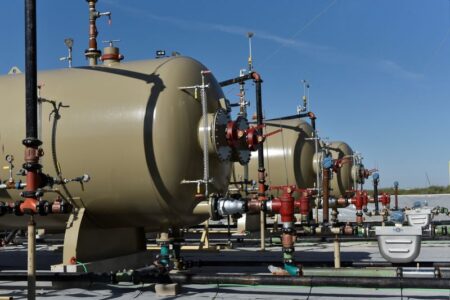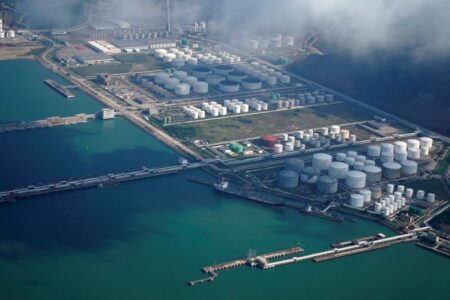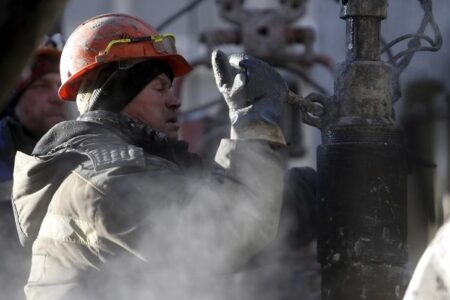By Shariq Khan
NEW YORK (Reuters) – A bitter January cold snap that knocked out 15% of Gulf Coast refining capacity had little effect on fuel prices, with two months of rising stockpiles helping U.S. markets avoid the extreme volatility seen during recent winter freezes.
Fuel price surges from extreme weather are becoming a greater concern for consumers and fuel suppliers, after major freezes in 2021 and 2022 caused plant outages in places like Texas that cut output and drove up prices.
That did not happen this year, as U.S. gasoline and distillate stockpiles grew by over 30 million barrels in the eight weeks prior to mid-January’s arctic blast, data from the Energy Information Administration showed.
U.S. refiners’ input fell by nearly 1.4 million barrels per day (bpd) in the week ended Jan. 19, as severe cold blanketed much of the country and caused equipment failures that forced temporary production shut-ins, according to government data.
The last time refinery input slowed that sharply in one week from freezing weather was in December 2022 when cold weather knocked out roughly 3.58 million bpd of capacity. Outages from that event prompted ultra-low-sulfur diesel futures, the benchmark for pricing diesel and in the U.S., to hit their highest seasonal level on record.
This year, the market was better prepared to absorb the hits, said Alex Ryan, energy director at Oasis Energy, a fuel wholesaler and distributor in Kansas.
“When these events happen back-to-back, it certainly makes you more cognizant of the potential impacts. We expected a short-term run-up in wholesale prices, but it wasn’t terrible this time,” Ryan said.
ULSD futures are about 22% below last January’s peak, trading at $2.80 a gallon on Tuesday. Gasoline futures are trading at $2.24 a gallon, down 17% from last January’s peak.
Trading in the wholesale market, which is first to witness price surges after refinery outages, was also broadly unaffected this year.
In the U.S. Gulf Coast, the region hit hardest by refinery outages, diesel barrels are trading around $111 each, the lowest seasonal level since 2022. Gulf Coast heating oil prices have averaged 19% lower in January than last year.
RELIEF FOR EUROPE
While the U.S. market absorbed the first of this year’s supply shocks, it might not be completely in the clear going forward.
The coming months could still see U.S. stockpiles fall rapidly with refiners expected to undergo a heavy maintenance season that could run into rising summer demand, said Tom Kloza, head of energy analysis at Oil Price Information Service (OPIS).
Marathon Petroleum (NYSE:) on Tuesday said it expects above average global turnaround activity this quarter, with four of its own largest refineries undergoing maintenance. Earlier, Valero Energy (NYSE:) forecast higher turnarounds to cut into gasoline stocks.
Gulf Coast crude-distillation unit outages since mid-January have averaged 1.5 million bpd, more than double the past three years’ average at this time of the year, according to Wood Mackenzie data.
“The amount of capacity shut in the Gulf Coast has remained stubbornly high for this early in the year,” Wood Mackenzie analysts said.
Softer U.S. fuel prices also bode well for international buyers, especially with countries in Europe facing growing uncertainties in importing products from Asia and the Middle East due to shipping disruptions in the Red Sea.
Europe imported a record amount of U.S. diesel in December, according to ship tracker Kpler. Imports slowed this month because of the cold snap, but were the highest for January since 2017, according to Kpler data.
“For Europe, it has been a big relief – we need those supplies,” said James Noel-Beswick, a distillates analyst at market research firm Sparta Commodities.
Read the full article here











